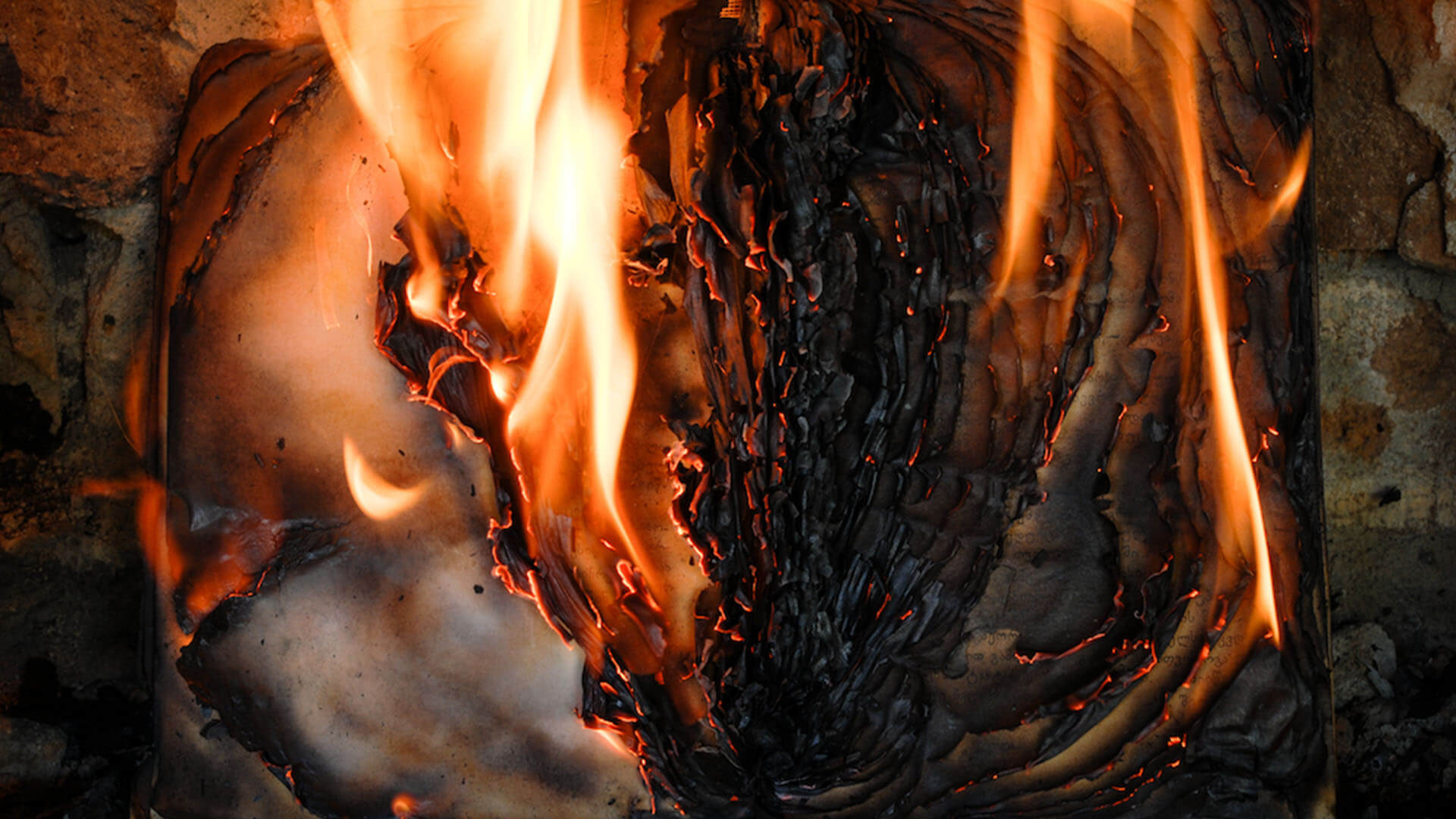
We’ve all seen it. The shocking images of debris in the background while an exhausted human with a thousand-yard stare gestures to where their house used to be. It’s easy to think it will never happen to us, and yet we know from looking at the data that climate change is only getting worse. Cataclysmic disasters as a result of severe weather events are becoming an all-too-common occurrence. And let’s not forget it’s not just natural disasters we have to contend with. Disasters can come in many other forms such as: war, economic collapse, terrorism, overtourism, neglect, and time.
The 2020 West Coast Fires
I live in the Pacific Northwest, a region known for its abundant sections of nature, outdoor recreation, and fires. For the last several years the West Coast has seen devastating fires ruining agriculture and outdoor recreation-based tourism; two of the largest economic engines in the Northwest. In a time of COVID-19, several friends and family members were forced to evacuate their homes quickly and seek out a safe place to stay for several days. It’s a traumatic thing to live through during an already traumatic year and the pandemic is limiting everyone’s ability to navigate the natural disaster safely. While 2020 has become a hallmark year known for our collective losses, we still could have never predicted needing to navigate two devastating and life-altering disasters at once. For a two-week period during the fires no one could go outside because the air quality was so bad it was immeasurable. Health professionals, fire fighters, and local officials warned residents that this could be mass fatality event. There was so much smoke it looked like the surface of Mars, and the smoke was so abundant that it eventually travelled as far east as the Netherlands. The enduring severity of these disasters cascading into one another brings into relief the reality of losing everything.
A Case of the Shoulda Couldas
A few family members came to stay at our home. Their property was in an active fire zone and our home was on alert for further evacuation orders. When you’re in a disaster—when it’s still happening and all you can do is wait—you tend to think about what you should’ve done. I listened as my family went over and over in their minds (aloud) a list of things in their house that they wished they had thought to grab. And as my family prepared for the evacuation of our home, we went through the mental exercise of what we should grab if we have to evacuate. Assuming all humans and pets are safe, that medicine and other necessity items are packed, what’s the last thing to go with you? This exercise was fascinating to me because I discovered there was actually quite little I would take; which raised larger questions related to my consumer habits and a reflection on why we choose the items we do to surround ourselves with. However, the exercise also provided insight into what I would take with me: my family history.
You Can’t Mitigate Loss if You’re Not Prepared
It sounds like an easy decision, right? Family history is unique, irreplaceable, and so deeply meaningful that of course we’ll take “it” with us. Once I made that decision my mind then went through the following thought process: Family photos? Check. They’re in the cloud. Oh wait. Not all of them. I should’ve finished digitizing grandma’s photographs from 1930s Samoa… Also, I have 20+ linear feet of historical documents and I can’t pack all of that with me. Where’s the 8th grade report I wrote about my grandfather?…
The unfortunate reality is too few of us are prepared for when disaster strikes and only a recent portion of our family treasures are “in the cloud”.
The Things We Can’t Carry
So, what does this mean for the things you can’t carry with you? The truth is a majority of our family treasures are physical items that are too large and too numerous to pack with us in the event of a disaster. Many of these irreplaceable treasures also exist with no digital backup—or digital surrogate as we archivists refer to them. This realization is a critical one to have before an emergency so that we can prepare the best we can, starting with the hard decision of what family treasures we plan to carry with us and what treasures will ultimately be left behind. The good news is that with a little preparation we can mitigate stress and loss by proactively addressing emotional and logistical issues. For example: For the items we can’t take with us but still possess inherent value, there are options available to us through disaster-proof storage or utilizing digitization as a digital memory tool.
Conclusion
The When Disaster Strikes miniseries will review the emotional and logistical steps necessary in order for your family treasures to survive a disaster. In the next two posts I’ll guide you through a checklist of things to think about and steps to take for before, during, and after a disaster.
Continue to Part 2 of this miniseries: Navigating Grief and Data Loss
A Note on the Response from the Profession
For those interested in the climate change response from archivists and museum professionals, I invite you to check out Project-ARCC (Archivists Responding to Climate Change), and this list of links from the Society of American Archivists.
About the Author
Rachael Cristine Woody is the owner of Rachael Cristine Consulting, a firm that provides services to archives, museums, and cultural heritage organizations. Rachael holds an MSLIS with a concentration in archives management, and more than 10 years of experience in history organizations — including the Smithsonian Institution and the Oregon Wine History Archive.
- Byte for Byte (5)
- Community (29)
- Control (5)
- Events (3)
- Everyone's An Archivist (10)
- FamilySearch (2)
- Holidays (6)
- Legacy Lab (3)
- Metadata (2)
- Milestones (4)
- Mobile Apps (2)
- Our Features (22)
- Our Team (9)
- Partnerships (7)
- Preservation (38)
- Publish (6)
- Reflections (10)
- Technology (12)
- Uncategorized (7)
- When Disaster Strikes (3)
- AAPI (3)
- AAPI Heritage (3)
- Accessability (1)
- Accessibility (2)
- Activity (2)
- African American (11)
- African American History (1)
- African American History and Culture Museum (1)
- AI (4)
- ALA (1)
- ALA Conference (1)
- ALAAC21 (1)
- Amanda Gorman (1)
- Amberly Russell (1)
- American History (5)
- American Indians in Texas (1)
- American Library Association (1)
- Ancestors (6)
- Ancestral Healing (1)
- Ancestry (5)
- Antebellum Era (1)
- Architectural History (1)
- Architecture (1)
- Archival (2)
- Archive.org (1)
- Archives (6)
- Archiving (1)
- Archivist (1)
- Artificial Intelligence (1)
- Baltimore (1)
- Basics (4)
- Beginners (1)
- Beginning (4)
- Black (1)
- Black History (11)
- Black History Month (8)
- Book Talk (1)
- Boston Tea Party (1)
- Brick Walls (3)
- Bryson Williams (1)
- byte4byte (8)
- Caribbean (1)
- Cemetary (1)
- Cemeteries (1)
- Cemetery (1)
- Census (2)
- Children (2)
- Children's Activity (1)
- Chinese (2)
- Citations (1)
- City Directories (1)
- Civil War (4)
- collaboration (2)
- Community (1)
- Community Archive (2)
- Community Archiving (1)
- conference (2)
- Context (2)
- Cooking (2)
- Creative (4)
- Creativity (1)
- Cultural Competency (1)
- Cultural Heritage (2)
- Danny Trejo (1)
- data privacy (2)
- Database (1)
- David Copperfield (1)
- Death (2)
- Death Records (2)
- DEIA (1)
- Digital Accessibility (2)
- Digital Archiving (3)
- Digital Estate Planning (2)
- Digital Humanities (1)
- Digital Legacy (1)
- Digital Preservation (2)
- digitization (7)
- Digitizing (1)
- Disability (1)
- Discussion (2)
- Diversity (1)
- DIY (1)
- Downsizing (1)
- Education (1)
- elon musk (1)
- Emigration (2)
- endowment (1)
- Equity (1)
- Escape Room (1)
- Estate Planning (1)
- Etherpad (1)
- Excel (1)
- Facial Recognition (1)
- Family (2)
- Family Activity (1)
- Family Archive (2)
- Family history (54)
- family history month (1)
- Family Patterns (2)
- Family Photos (1)
- Family Reunion (1)
- Family Secrets (1)
- family stories (2)
- FamilyHistory (11)
- Fashion (2)
- Fashion History (1)
- Film Negatives (1)
- Find a Grave (1)
- FOIA (1)
- Food History (4)
- Foreign Records (1)
- Forgiveness (1)
- gallery (1)
- Games (1)
- genealogy (63)
- Gifting (1)
- GPS (1)
- grants (1)
- Graves (1)
- guest post (1)
- Handwriting (2)
- Hispanic Heritage (1)
- Historic American Buildings Survey (1)
- Historical Fashion (1)
- History (13)
- Holidays (2)
- Homes (1)
- Human Rights (1)
- Illness (1)
- Immigration (2)
- Inclusion (1)
- Indigenous (1)
- Indigenous Heritage Month (3)
- Indigenous History (3)
- Internet Archive (1)
- Interviewing (1)
- Jewish History (1)
- Jim Crow (1)
- Kids (4)
- Land (2)
- Latinx Heritage (1)
- Laws (2)
- Learning (1)
- Legacy Contact (1)
- Legacy Lab (1)
- Legacy Planning (2)
- Legal (2)
- Letters (1)
- lgbtq (2)
- lgbtq history (1)
- LGBTQIA (2)
- LGBTQIA History (1)
- Library of Congress (3)
- Literature (1)
- Local History (6)
- Maps (2)
- Marriage (1)
- mastodon (1)
- Megan Dolan (1)
- member spotlight (2)
- Member Success (1)
- Memoir (2)
- Memories (27)
- Memory (4)
- Memory Forward (1)
- Metadata (3)
- Metadata Working Group (1)
- Methodology (9)
- Mexico (2)
- Migration (2)
- military (5)
- Military History (4)
- Mission (1)
- mobile apps (2)
- Mysteries (1)
- NAHM (1)
- Native American (1)
- New Orleans (1)
- Newspapers (1)
- Novel Records (1)
- Obama (1)
- OCR (1)
- open source (4)
- Oral History (1)
- organization (2)
- Organize (1)
- Organizing (9)
- Orientation (1)
- Pandemic (1)
- Photo Managers Conference (2)
- Photo organizing (2)
- Photography (3)
- Photos (23)
- ponga (1)
- postcard archive (1)
- postcards (1)
- Preservation (23)
- Preservation Services (1)
- Preservation Week (1)
- Probate Records (1)
- Problem Solving (2)
- product updates (4)
- Professional Development (1)
- Project (1)
- ProjectKin (2)
- public archive (3)
- public archive spotlight (7)
- Public Gallery (1)
- Publish (1)
- Recipe (2)
- Recipes (1)
- Records (18)
- Religion (2)
- Repositories (3)
- Research (8)
- Research Trip (1)
- Resilience (1)
- Resources (1)
- Reunion (1)
- roadmap (1)
- Robert Friedman (3)
- RootsTech (4)
- RootsTech 2024 (4)
- Safety (1)
- Sanborn Maps (1)
- Savemetadata.org (1)
- Scanning (1)
- Scavenger Hunt (2)
- Search Techniques (1)
- Sharing (4)
- Social Clubs (1)
- Social History (6)
- Sociology (1)
- softwaredevelopment (1)
- softwareengineering (2)
- Sources (1)
- spotlight (3)
- staff spotlight (2)
- storage grant (1)
- Stories (18)
- StoryCorps (1)
- storytelling (12)
- Suffragettes (1)
- sustainability plan (2)
- sustainable organization (1)
- Tax Records (1)
- Taxes (1)
- technology (14)
- Thanksgiving (1)
- The Photo Managers (1)
- Timeline (1)
- Tools (7)
- traditions (4)
- Trans History (1)
- Transcribing (1)
- Translating (1)
- Translation (1)
- Trip (1)
- Truth (1)
- twitter (1)
- twittermigration (1)
- ui/ux (1)
- Veterans Day (2)
- Videos (1)
- Volunteering (1)
- webinar (1)
- Website (1)
- Websites (5)
- West Indies (1)
- wikipedia (1)
- Wills (1)
- Women (11)
- Women's History (1)
- Workshop (10)
- Writing (7)
- Writing Club (1)
- WW1 (1)

